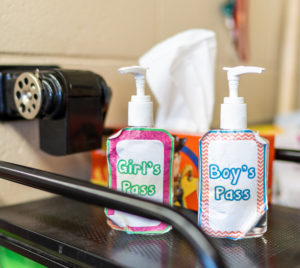Since March, the COVID-19 pandemic altered the way we interact with others in public spaces. Now, in August 2020, there is hope to return to a “new normal.”
In our last blog post about the uncertainty around COVID-19 and reopening schools in May, we spoke with Premier Medical Group pediatrician Dr. Kimberly Clare about the possibility of returning to school in September. At the time, the prospects looked bleak.
We chatted with Dr. Clare again for an update on the pandemic and its role in the lives of our children. As the state reopens in Phase 4, it’s critical to understand the risks and how to protect children from infection. Learn more about the statistics and Dr. Clare’s recommendations below.
COVID-19 Statistics: April to August
In New York, the enforcement of social distancing, wearing masks, and practicing hygiene and cleanliness have significantly dropped the rates of new infections for adults.
The peak number of positive tests was on April 14th at over 11,000 cases. One month later on May 14th, that number dropped to slightly over 2,700 cases. On August 14th, the number stands at below 800 new cases.
But what about our kids? Dr. Clare noted that testing limitations have skewed the statistics for cases involving children.
However, the numbers we do have are not negligible: across the United States, nearly 100,000 children tested positive in the last two weeks of July. Since the pandemic started, there have been more than 5 million cases of infection, with over a quarter-million of those being children.
Dr. Clare confirmed that she has seen a few cases in her own office: “For the most part they picked it up from a parent or an immediate family member.”.
With all that said, New York Governor Andrew Cuomo is reopening schools in September in both New York State and New York City. Governor Cuomo states that as long as rates of infection stay below the dangerous threshold in school district areas, then schools will be allowed to operate.
New York’s Reopening Requirements
New York Forward has initiated Phase 4 of reopening the state. The website provides a list of requirements that schools, students, parents, teachers, and other personnel must follow in order to remain open:
- Social distancing of at least 6 feet must be maintained if possible
- Masks must be worn if social distancing is not possible
- Train and enforce students, faculty, and staff on cleaning and hygiene practices
- Prohibit sharing food and meals unless individuals are from the same household
- Mandatory health screenings for students, parents, faculty, staff, and visitors
- Develop protocols for caring for sick students and faculty
- Increase ventilation in school buildings
- Schools must notify state and local health departments of any positive tests
- Schools must create a remote learning environment for students who are unable to attend school in-person
The effort to return kids to school has a been controversial subject since the beginning of the pandemic. For many parents, there is little flexibility to homeschool children due to work or other obligations.
If you choose to send your child to school, following the precautions below will help keep your child and the rest of your family safe from infection.
Guidelines for Coronavirus Prevention
While Dr. Clare notes that children are more likely to recover quickly from COVID-19, it is still important to take every step against infection, because they may be spreading it without any noticeable symptoms.
Here are the general tips for preventing COVID-19 infection in children from the Center for Disease Control:
- Have your children wash their hands often, especially after returning home from school and before eating a meal
- Remind children not to touch their face
- Launder children’s clothing when they return from school or public spaces
- Children 2 years and older should wear a mask in public
- Keep children at least 6 feet away from other people
- Avoid people who are coughing and sneezing
Playtime is necessary for a child’s development, but the pandemic has made it difficult for children to play safely.
Try online playtime by connecting over virtual chat and encouraging children to talk and “play” with other kids through the screen.
Stress the importance of listening to teachers.
As children return to school, it’s important now more than ever to listen to teachers.
If you haven’t talked to your kids about the pandemic, consider sitting down with them to stress that they should listen to their teachers when they return to school for their safety.
While you don’t want to scare them, you do want to make sure they know that there are repercussions for not listening to the teacher and other school authorities.
What if a family member contracts the virus?
If someone in the family is sick, Dr. Clare says you should isolate the family member from the rest of the household to prevent the infection from spreading.
The entire family should quarantine for 14 days. Be sure to follow the guidelines listed above to keep the household clean and lower the risk of infection.
Don’t forget about flu shots!
Dr. Clare recommends taking your child to the pediatrician for their yearly flu shots. She says, “This year is especially important for people to get their flu shot, particularly those with asthma or underlying illnesses.”
She says that the major concern for children is contracting COVID-19 and the flu at the same time. It won’t provide 100% coverage against the flu, but it will help reduce the severity of the illness.
Maintain your child’s (and your own!) routine vaccinations to protect your immune system. Premier Medical Group’s pediatric doctors’ office is open and available for appointments. Set up an appointment today to defend your family’s health this flu season.
Visit Premier Medical Group’s Pediatric Division today.
Premier Medical Group cares for children from infancy to age 21. Our Pediatric Division is a NCQA-certified Patient Centered Medical Home dedicated to providing total wellness and health support for your child.
Contact Premier Medical Group today to set up an appointment for your child’s flu shot.



